In our monthly look back at forgotten VHS favorites from the video store era, we revisit Brian De Palma’s dark and twisted thriller “Raising Cain”.
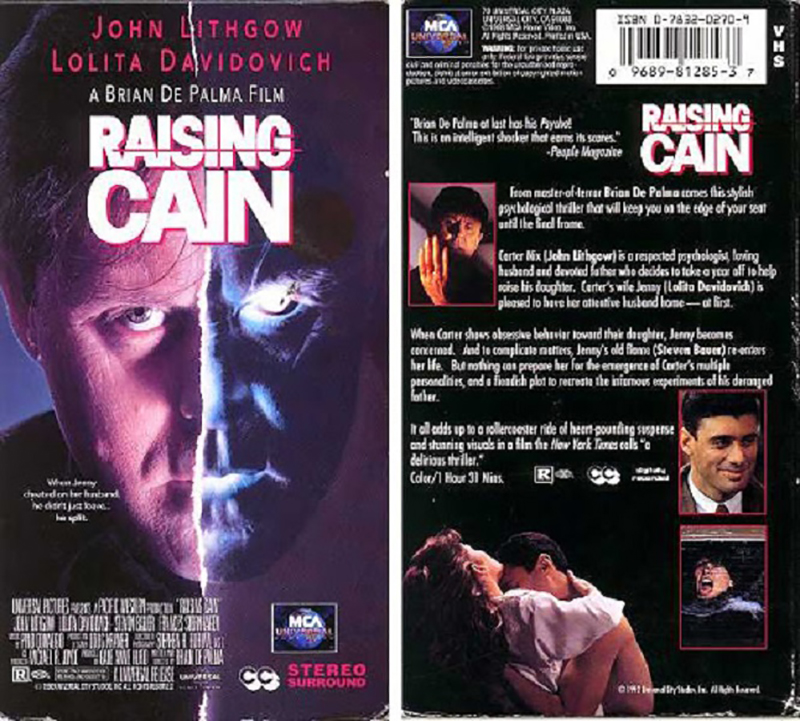
As someone who primarily knew John Lithgow as the lovable goofball dad in the 1987 family film Harry and the Hendersons, seeing his face on the VHS of Raising Cain in the video store was a shock. Lithgow’s face is slightly angled and tilted down, his eyes looking up from a shadowed face torn down the middle with one side blackened, only the eyes and mouth an electric white like an eerie photo negative.
It’s a jarring image made more dangerous on the poster by two people in a passionate embrace below Lithgow’s frightening image, giving the feeling that these two lovers are in for a world of trouble. The wonderfully cheeky tagline above the two lovers explains the tear dividing Lithgow’s face: “When Jenny cheated on her husband, he didn’t just leave… He split.”
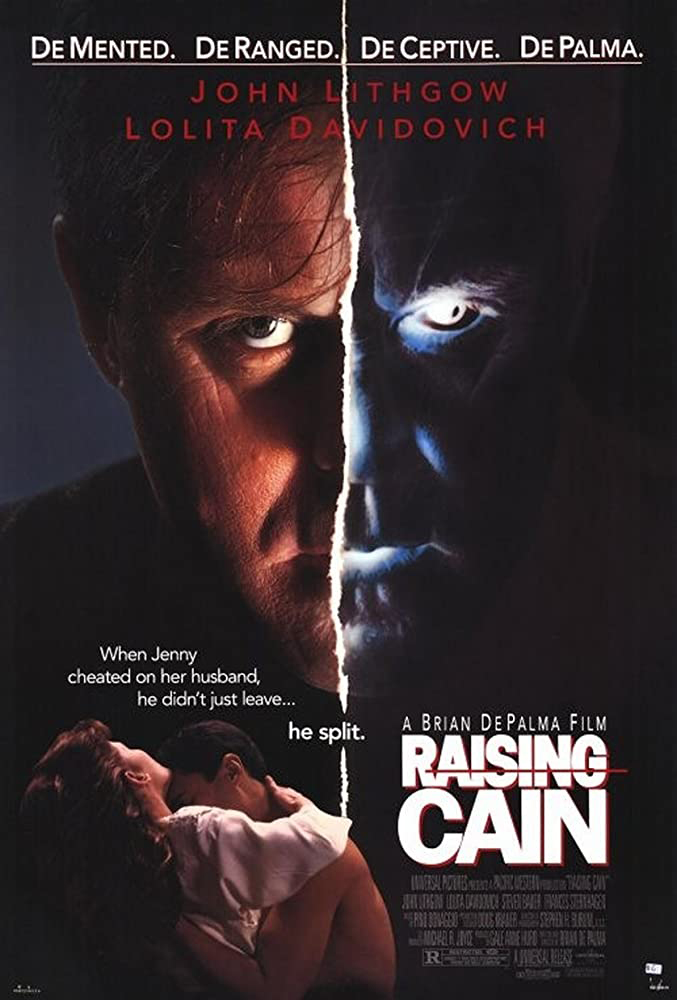
And the tagline at the top prepares the viewer for the deliriously wacky ride that is Raising Cain: “De Mented, De Ranged, De Ceptive, De Palma.”
Pulpy psycho-thrillers were how Brian De Palma made a name for himself as a filmmaker, but he also had mainstream Hollywood success with The Untouchables (1987) and would hit big in 1996 with Mission: Impossible starring the biggest star on the planet, Tom Cruise. In 1991, De Palma was coming off The Bonfire of the Vanities, one of the biggest flops in Hollywood history, and searching for his next project. Perhaps looking to right the ship, De Palma returned to familiar ground with a film in the suspense/thriller genre, the director’s first since 1984’s Body Double.
De Palma had an idea from years before when a friend who was a child psychologist took time off from his practice in order to observe the development of his own child full time. This friend planned to write a book about his experience and observations. And while De Palma found this to be strange, he began thinking about the situation from the angle of a mystery/thriller movie.
He started to craft a story in his head about Dr. Carter Nix and his wife Jenny, an oncologist who worries about the fascination her husband has with their daughter Amy, unaware of what is really going on inside his head. De Palma titled the movie Raising Cain.
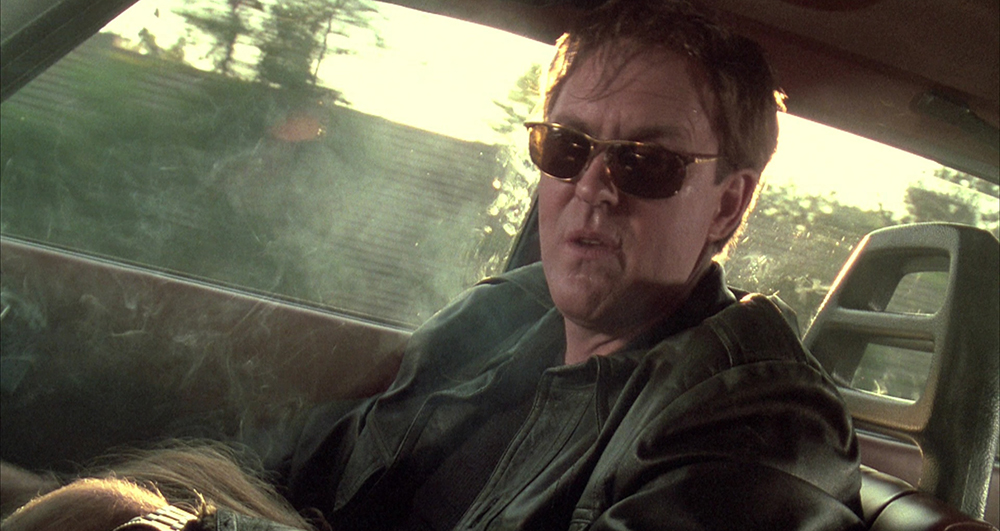
The role of Carter Nix actually consisted of five separate characters, all of which represented unique personalities residing within Carter’s mind.
The demanding part went to John Lithgow, an actor who had gained De Palma’s confidence, having worked with the director twice before in Obsession (1976) and Blow Out (1981).
In Raising Cain, Lithgow had to play Carter, his evil twin/counterpart Cain, Carter’s father Dr. Nix, a seven year old boy named Josh, and a mysterious woman named Margo. Lithgow said of the role that “difficult parts to play are the ones when there isn’t enough to do. This one was just so much fun, playing this part is the kind of thing you became an actor hoping to be able to do.”
De Palma said that Lithgow “has the ability to be many different people,” and also added, “he looks so different just by how he plays the part.”
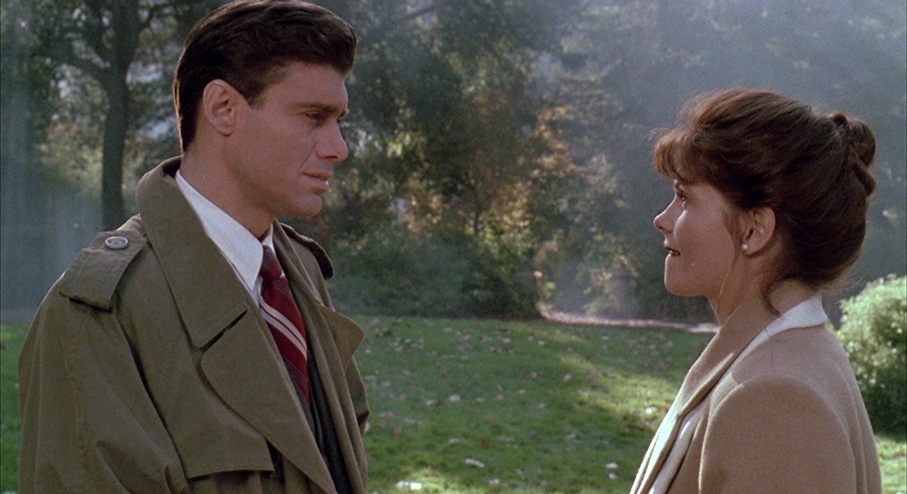
Rounding out the impressive cast was Lolita Davidovich as Carter’s wife Jenny and Steven Bauer as her lover Jack.
Steven Bauer‘s turn as Jack marked the third time he and De Palma worked together, having done so in 1984’s Body Double as well as Bauer’s acting debut the year before in Scarface. For Raising Cain, Bauer was instructed by De Palma to simply be “beautiful, cool, and attractive to women.” Seems easy enough to do for a guy who had the honor of calling actress Melanie Griffith his wife in the 1980s (Griffith and Bauer divorced in 1989, the first of four divorces for the actor).
His performance as Jack was exactly what was called for: a pretty face who made Davidovich’s Jenny happy, therefore making the viewer at ease with him — even if he did cheat on his wife (Jenny’s patient) as she lay dying of cancer.
Lolita Davidovich broke out in 1989 starring alongside Hollywood legend Paul Newman in Blaze as the impossible-not-to-fall-in-love-with burlesque dancer Blaze Starr, a role that earned her a Most Promising Actress nomination at the Chicago Film Critics Association Awards. Davidovich was catapulted to the edge of Hollywood’s A-list, sharing the screen with some of the biggest stars of the 1990s, including Steve Martin, Wesley Snipes, Richard Gere, Demi Moore, Tommy Lee Jones, and Tim Allen.
Despite this, the actress never quite achieved the level of stardom she was worthy of. Davidovich is an eye-catching beauty with a natural welcoming presence, the epitome of what was required for the role of Jenny in Raising Cain. These qualities, along with her wide-ranging talent, has kept the actress consistently working in a career that now enters its fifth decade.
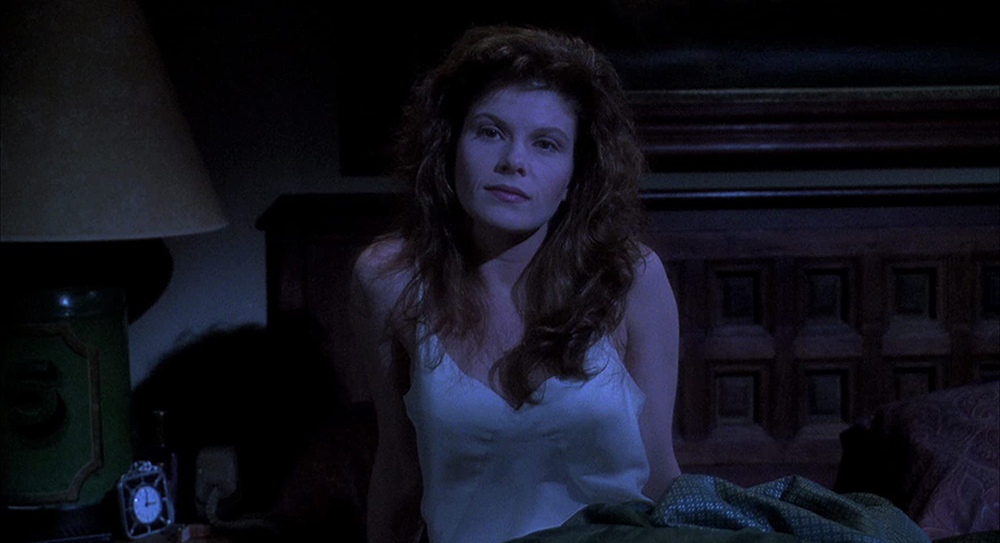
With a budget of $12 million, principal photography began on Raising Cain on October 24, 1991.
Menlo Park in Mountain View, California, served as the location of the park where many pivotal scenes in the film take place, namely the scene where Carter sees Jenny with Jack. Other filming locations included Los Altos, Palo Alto, and San Francisco, with production wrapping on December 16, 1991.
Total production cost came in at $11 million, one million dollars under budget, a rarity in Hollywood filmmaking.
De Palma credits this achievement to his then wife and producer Gale Anne Hurd, former executive assistant to Roger Corman and producer of such films as The Terminator, Aliens, and The Abyss.
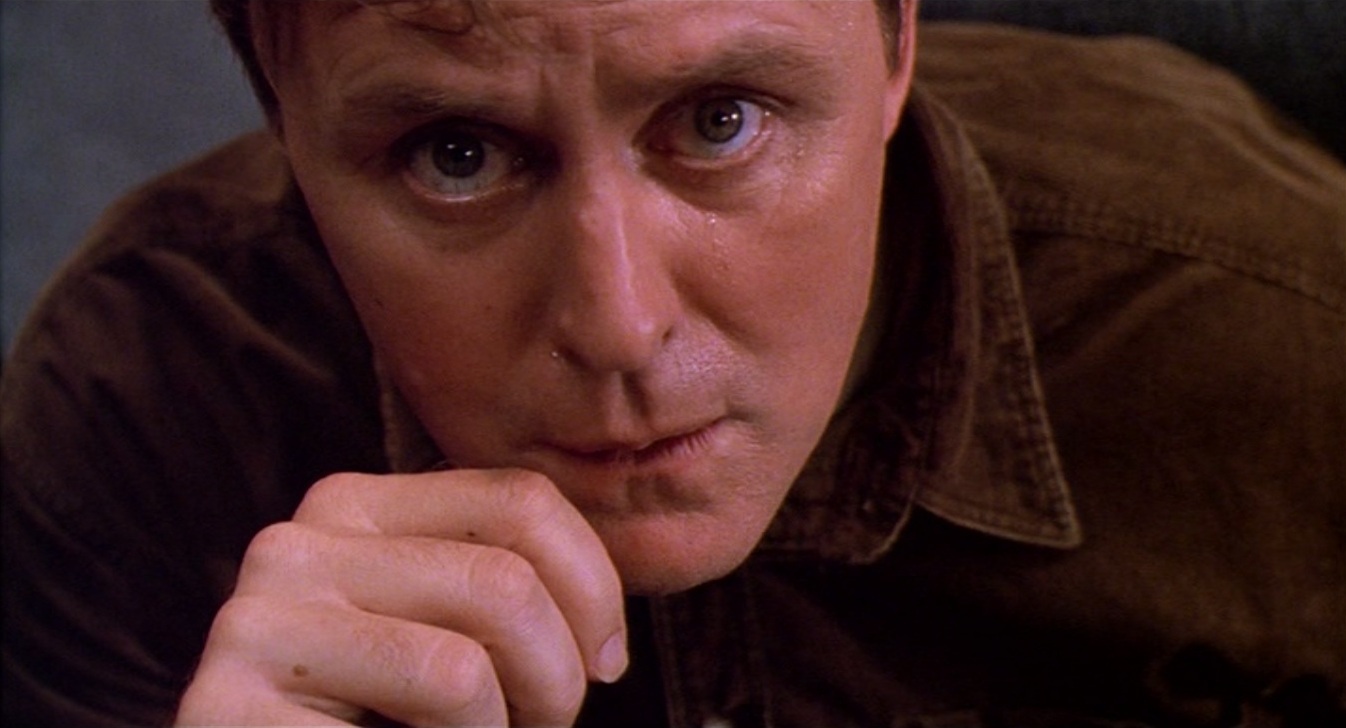
The devilishly twisted, split personality roller coaster that is Raising Cain begins with a bang and never lets up.
Carter is meeting a friend in the park, their kids playing in the background. He looks at his watch, musing his wife was supposed to pick him and his daughter Amy up a half hour ago. “Must be held up at the hospital again,” he says. His friend offers to give him and Amy a ride home, and Carter agrees.
All traces of the lovable dad from Harry and the Hendersons vanish when Lithgow’s Carter knocks his friend unconscious with chloroform in order to kidnap her child for observation and experimentation — in service of Carter’s deranged father, who is also a child psychologist.
We also meet Cain, Carter’s sunglasses-wearing, bad boy alter ego. He enters the scene to give Carter a hard time for being so wishy-washy about what to do with the woman’s body.
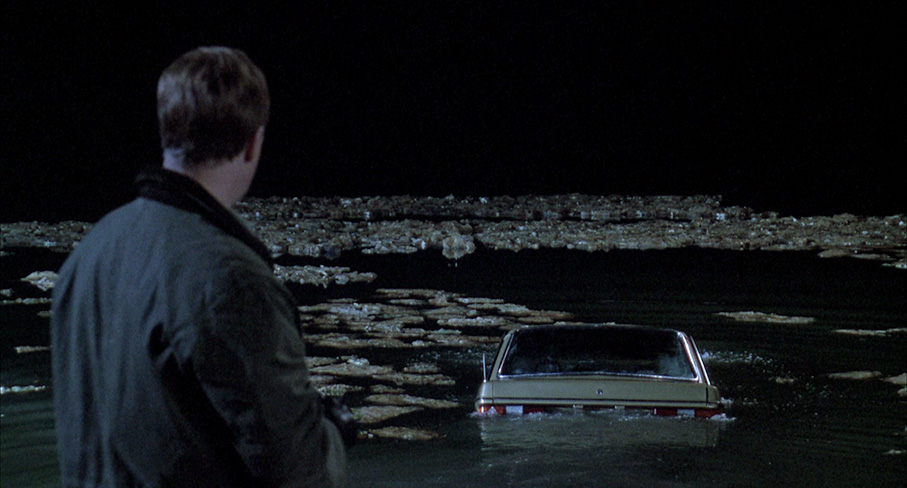
Remember the two lovers on the films poster?
That’s Jenny and Jack. The two meet by chance in the park, and again later in a clock store. The camera moves in tight on their faces, filling the frame. That moment is theirs and theirs alone, and one gets the feeling this sense of intimate obliviousness happens often between the two. A few minutes later, suspicions are confirmed when Jenny is talking to her friend Sarah (Mel Harris of Thirtysomething fame) and she asks if Jenny is thinking of restarting the affair.
A little later in the film, Carter spies his wife and Jack all over each other in the park, and he struggles with the sight. Once again, Cain steps in to take over, to handle things.
And just as we suspected from the foreshadowing of the menacing poster art, these two are in real trouble.
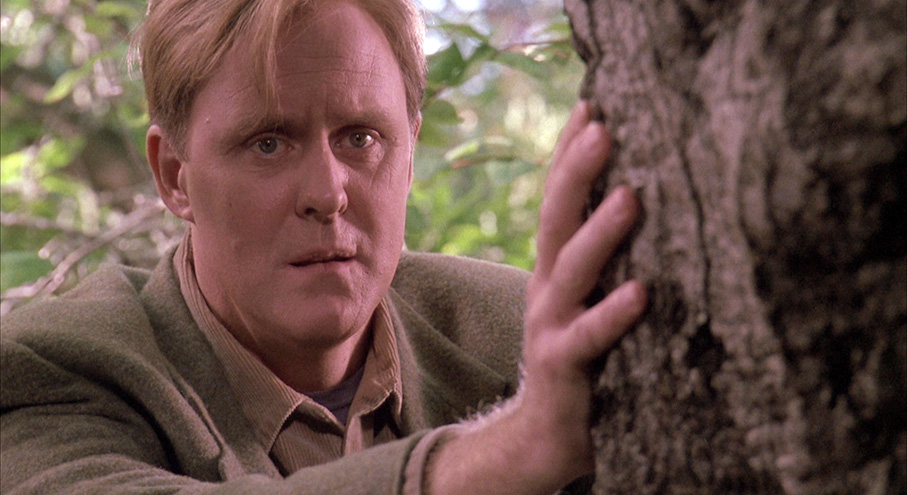
Being a theatrically-trained actor, Lithgow is perfect at this kind of melodrama that demands extreme expression.
He brings the look on his face from the depths of despair to a slow growing evil grin in an instant (an ability that serves Lithgow astonishingly well later in the film as the seven year old Josh). Cain decides the best course of action to take is killing Jenny, running her car into a marsh with her unconscious body inside. This mirrors the scene from Psycho when Norman Bates sinks Janet Leigh’s car into the marsh by his home.
Except here, Jenny abruptly awakens, screaming for help and banging on the back window as water pours in. Her eyes fill with panicked fear faster than the water filling the car around her.
A little later in the film, we discover that Jenny escaped the sinking car and returns home to immediately check on Amy. There’s a beautifully twisted shot here with Jenny on top of Carter with a knife to his throat, her face up close taking up half the screen as she screams, “Where’s Amy?” As Carter pleads that he doesn’t know, Cain stands behind Jenny’s face in the background like an evil angel on her shoulder, teasing Carter that he knows where Amy is.
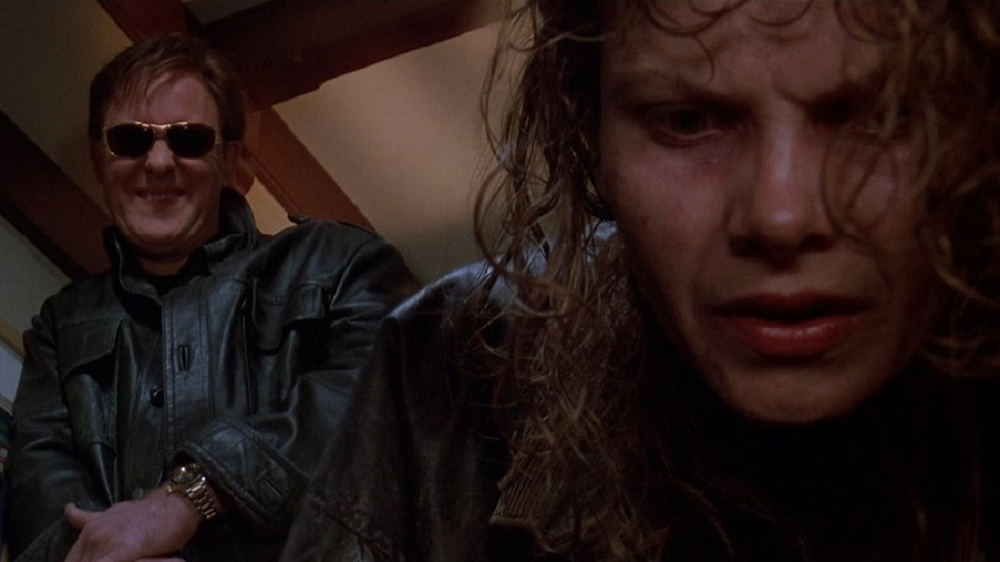
This gorgeous shot accommodates the complex dynamic between the three characters in the scene, the kind of disorienting staging that De Palma loves.
The scene is expertly shot with angles that mirror the confusing landscape of Carter’s dangerously divided mindset.
De Palma said he constructed Raising Cain to be told through dreams, fantasies, and flashbacks, leaving the viewer to decipher what is real or imagined. There’s a lot going on in Raising Cain, and unpacking the mystery and split personalities as you watch is part of the experience.
As a result, details of the plot from this point on will remain vague or absent.
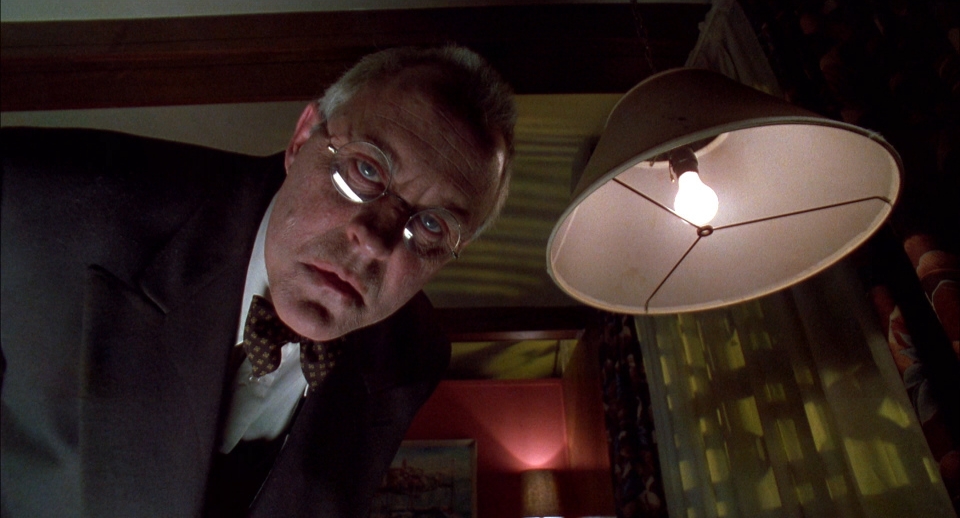
Adding to the puzzle-like intrigue of the film is the suspenseful, Hitchockian score from composer Pino Donaggio.
It’s a score that earned him a Fangoria Chainsaw Award nomination for best soundtrack. Raising Cain was one of many collaborations between De Palma and Donaggio, who scored Carrie, Blow Out, Dressed to Kill, and Body Double.
In addition to stylishly staged shots, the centerpiece of filmmaking craftsmanship in Raising Cain is a long take in the middle of the film that is essentially an exposition dump. Dr. Waldheim (Frances Sternhagen) explains to two police officers the entire shocking history of Carter and his father Dr. Nix. During this explanation, the three characters walk through a large, open building, down two long flights of stairs, and take a ride down an elevator. It all happens in one winding, continuous take that lasts four minutes.
John Lithgow said an entire day was spent just rehearsing for the scene, with another spent filming so that three to four useful takes could be captured. It’s a smart technique that uses compelling visuals to successfully spice up a scene that might have otherwise been tedious had it featured just talking heads.
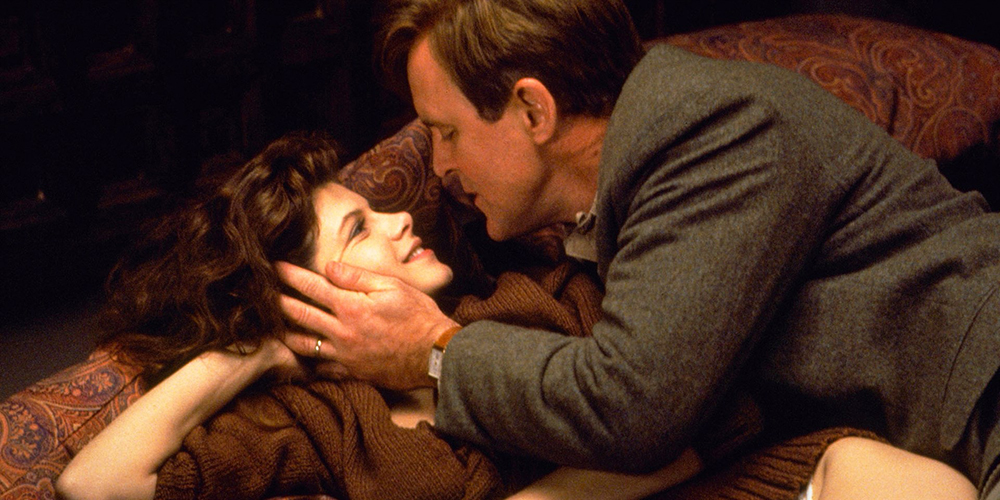
Referring to the film as a “romantic suspense thriller”, Universal Pictures held a press screening that left many critics laughing, with some even walking out.
Because of this, Universal rewrote the press kit to label the movie “a departure from the traditional suspense thriller, combining wry humor with shocks and thrills.” This left the impression that Raising Cain had intentional satirical elements.
One might assume De Palma would shy away from satire after The Bonfire of the Vanities crashed and burned so badly, leaving star Tom Hanks pondering his future in Hollywood (good thing he stuck with it). But De Palma’s films do have a diabolical sense of humor to them, so much so that one critic dubbed this trait “the De Palma cackle.”
Whether this label refers to the audience laughing at the film or the film laughing at the audience, one can’t be sure. Welcome to the world of Brian De Palma.
Opening in US theaters on August 7, 1992, Raising Cain was largely panned by critics.
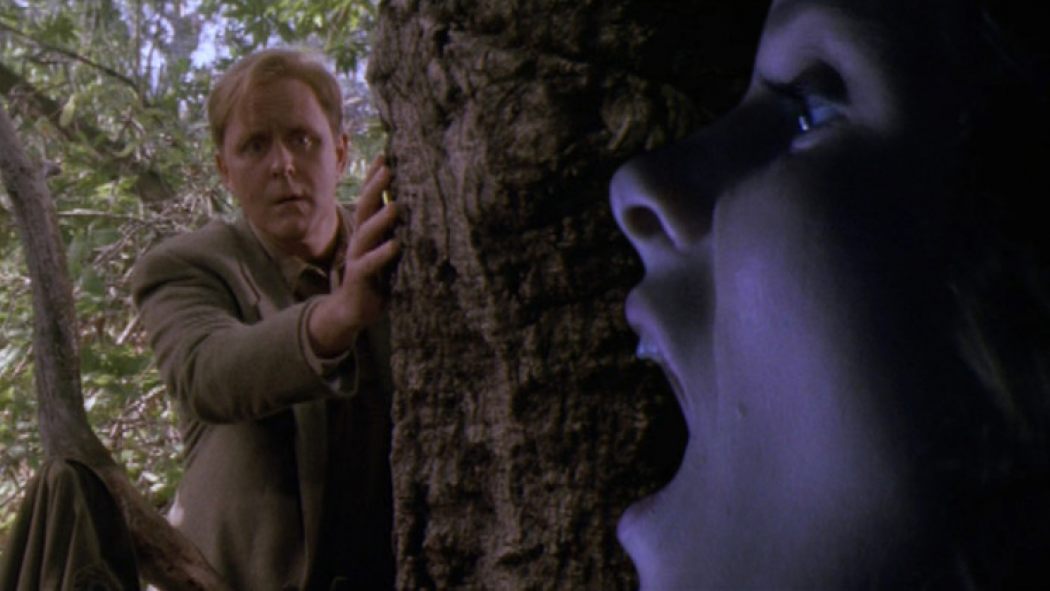
These critics viewed the film as visually enticing and commended Lithgow’s performance, but wrote it off as confusing, incoherent, and borderline self-indulgent schlock.
The film didn’t necessarily flop at the American box office, but it didn’t hit with mainstream audiences either — bringing in a total gross of $21 million, unable to even double its budget (worldwide gross did push the film to $37 million, a modest hit).
Largely due to social media and the Scream Factory Blu-ray release in 2016, Raising Cain has since been rediscovered and reexamined, garnering a respectable cult following. In an unprecedented move, Scream Factory postponed the initial Blu-ray release to included a Director’s Cut of the film that was actually assembled by a De Palma superfan named Peet Gelderblom.
Gelderblom assembled the cut in 2012 after reading about De Palma’s regret of changing the first half of the film, which was supposed to start with the Jenny/Jack story and then lead into Carter and his split personalities. So Gelderblom fixed this and posted his results online, catching the eye of De Palma himself who loved the cut and insisted it be included on the Blu-ray — declaring it the official Director’s Cut.
This rearranging of scenes and reversing of order to tell one story, as assembled by two different people, makes Raising Cain not just a film about split personality, but a split personality in and of itself. Welcome to world of Brian De Palma.
Raising Cain is currently available to stream on Netflix.
Make it a Double Feature!
Pair Raising Cain with De Palma’s own Dressed to Kill from 1980.
Star Angie Dickinson told Johnny Carson on The Tonight Show that this was her favorite of the films she starred in, even though, much like Janet Leigh in Psycho, her character gets killed off rather early on. This mystery/thriller focuses on a woman who kills a patient of a psychologist and then goes after a woman who witnessed the murder.
Dealing once again with split personality to a degree, Dressed to Kill has all the trademarks of a De Palma film, from dreams to depth of field staging to a sequential centerpiece — this time being an eight-minute long sequence in a museum where there is no speaking (Dickinson is excellent here).
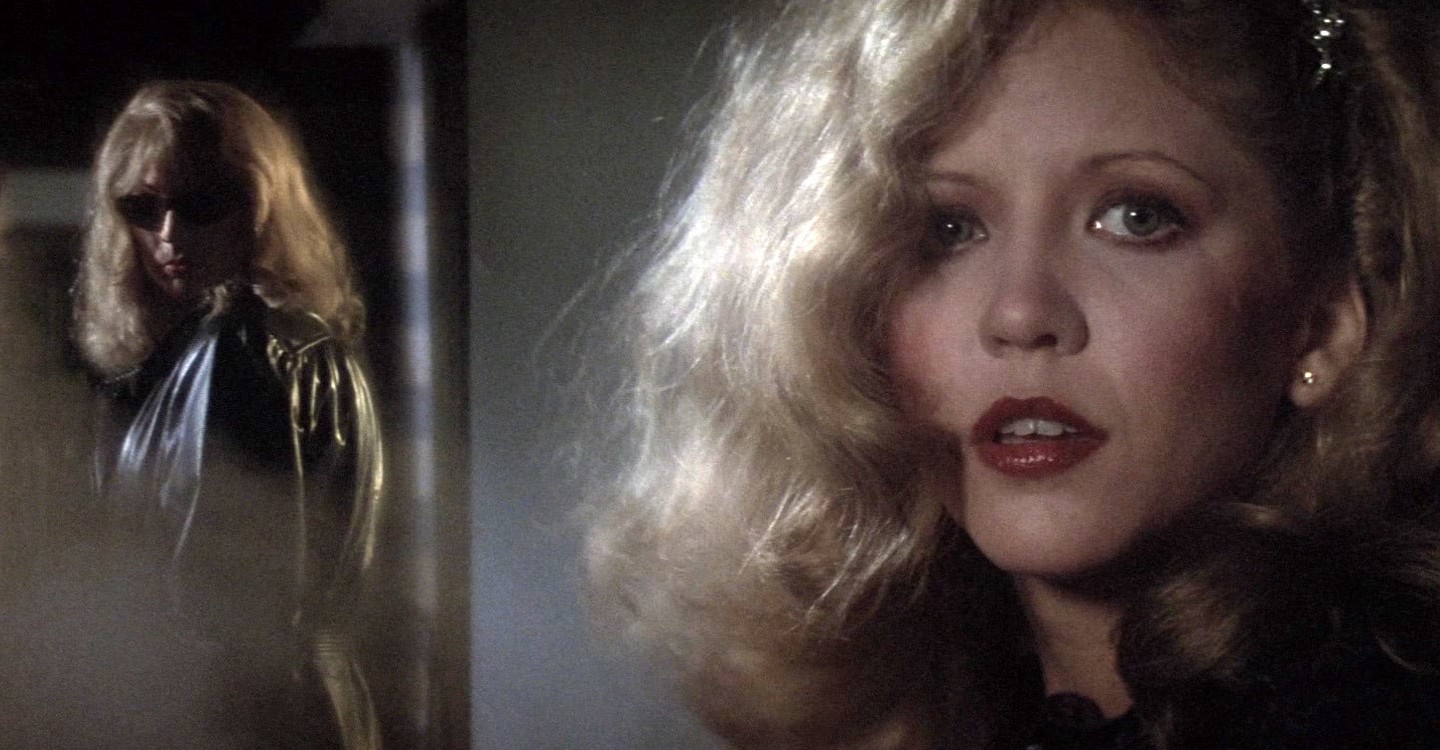
Much like the up and down volume and pleading timber of John Lithgow’s voice that makes him sound trustworthy and sympathetic in Raising Cain, the intelligent, soft spoken British accent of Michael Caine has the same effect in Dressed to Kill. And much like Carter Nix harboring secrets, Caine’s Dr. Robert Elliot does the same here as well, with both sharing an obscure affinity that causes them to kill.
A cat and mouse thriller full of tension and trashy sex appeal (a gorgeous Angie Dickinson, a seductive Nancy Allen), Dressed to Kill is peak De Palma, a quality that made the film worthy of the Criterion Collection.


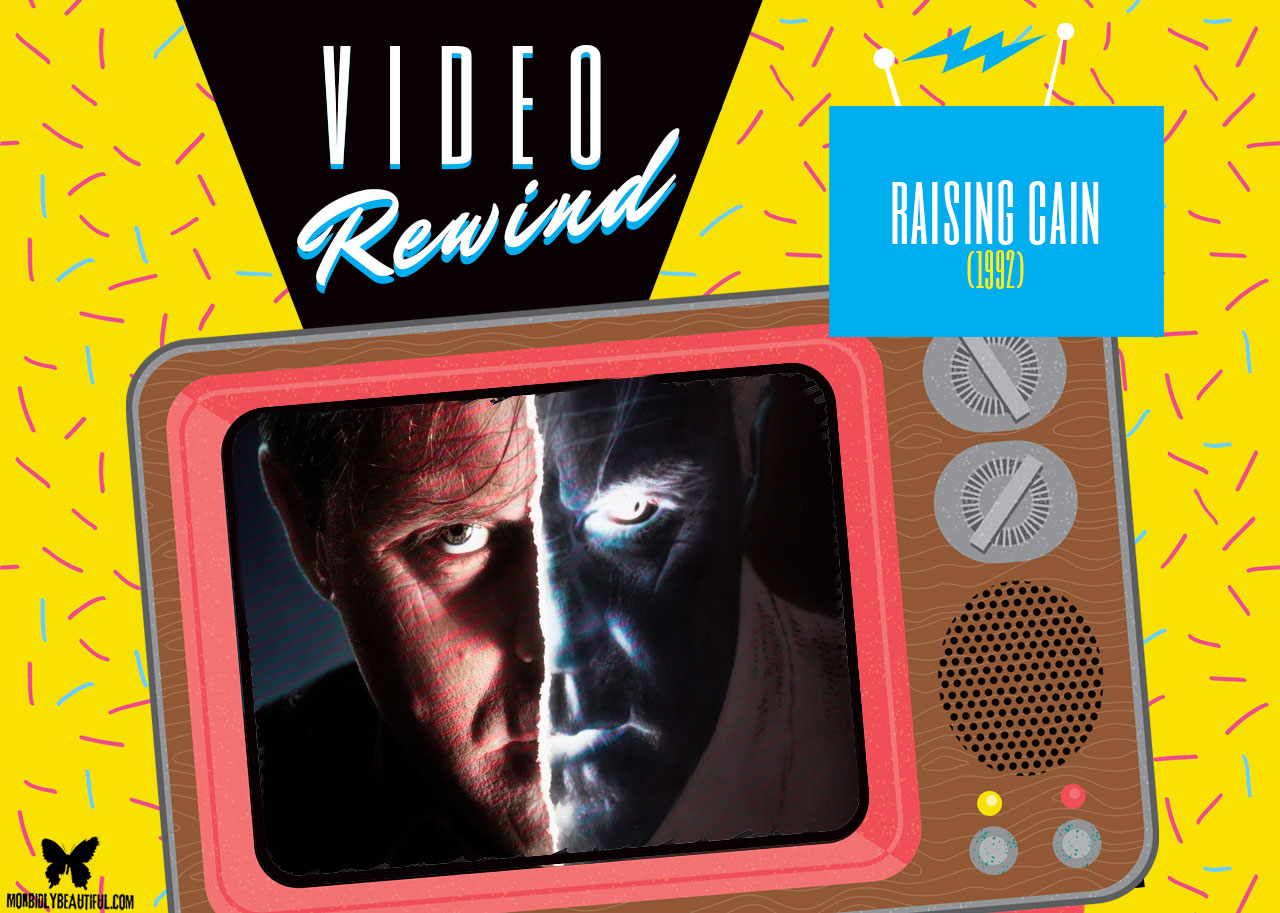












Follow Us!